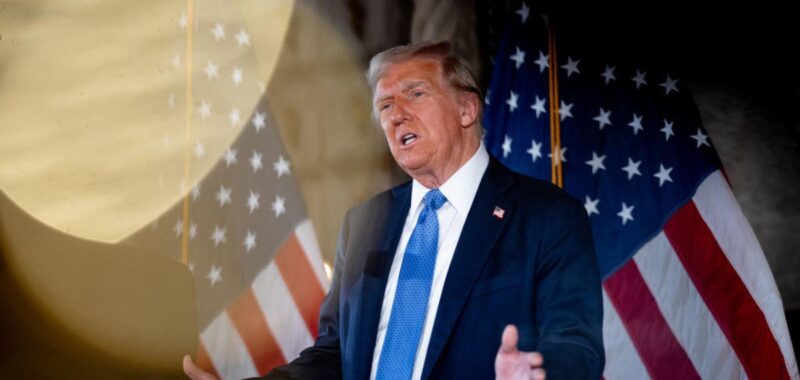Washington — President-elect Donald Trump, Vice President-elect JD Vance and billionaire Elon Musk blew up a GOP-backed deal to fund federal agencies into March, raising the pressure on Republican congressional leaders to craft a plan to avert a government shutdown just before the holidays.
In a statement Wednesday, Trump and Vance lambasted the agreement for including provisions favored by Democrats. But the incoming president and vice president also added a new, significant wrinkle to negotiations when they urged Congress to raise or abolish the debt ceiling now, instead of next year.
“Increasing the debt ceiling is not great but we’d rather do it on Biden’s watch,” Trump and Vance said in their statement. “If Democrats won’t cooperate on the debt ceiling now, what makes anyone think they would do it in June during our administration? Let’s have this debate now.”
What is the debt ceiling?
Set by Congress, the debt ceiling, or limit, is the maximum amount of money the U.S. Treasury is authorized to borrow to pay debts incurred by the federal government. Lifting the debt ceiling does not authorize new spending, but instead lets the government spend money on obligations that Congress has already been approved.
Failing to address the debt ceiling could lead the U.S. to default on its debt, which would have devastating effects on the economy. The government has never defaulted, and the Treasury typically uses accounting moves, known as “extraordinary measures,” to delay breaching the debt ceiling.
While raising the debt ceiling used to be routine, legislation addressing it has in recent years been used as leverage to force policy concessions and fuel debates over government spending.
Congress last addressed the debt ceiling in June 2023 as part of a legislative package negotiated by President Biden and then-House Speaker Kevin McCarthy. That deal suspended the debt ceiling through Jan., 1, 2025, ensuring any fight over it would take place after the 2024 elections.
The Treasury Department will likely implement extraordinary measures to stave off a default in the new year. It will also announce an “X date,” the estimated point at which the government will no longer be able to pay its obligations. The Economic Policy Innovation Center, a conservative think tank, projected in an analysis released Monday that it’s possible the debt limit will be reached by June 16.
While the Treasury Department’s use of extraordinary measures would give Congress more time to address the debt ceiling, Trump is now urging lawmakers to take action now, before he takes office.
The Constitution gives Congress the power to borrow on behalf of the U.S., and Congress has delegated that authority to the executive branch, while placing a limit on the amount of debt that can be outstanding. Lawmakers could pass a bill to repeal the debt limit, and proposals to do so were introduced by Democrats in the House and Senate in the past several legislative sessions, although they all failed.
Why does Trump want to raise the debt ceiling?
The president-elect will come into office with a legislative to-do list that includes securing the border and extending provisions of his signature Tax Cuts and Jobs Act, which was enacted in 2017 and overhauled the tax code. But a fight over the debt ceiling could complicate efforts by the Republican-led House and Senate to focus on those legislative initiatives and pass them quickly.
Trump is urging lawmakers to eliminate the debt ceiling altogether, a position that some prominent Democrats have endorsed in the past.
“Number one, the debt ceiling should be thrown out entirely,” Trump said in a phone interview Thursday with CBS News’ Robert Costa. “Number two, a lot of the different things they thought they’d receive [in a recently proposed spending deal] are now going to be thrown out, 100 percent. And we’ll see what happens. We’ll see whether or not we have a closure during the Biden administration. But if it’s going to take place, it’s going to take place during Biden, not during Trump.”
Trump separately told ABC News that “there won’t be anything approved unless the debt ceiling is done with,” indicating any spending deal to prevent a shutdown must address the debt limit.
“If we don’t get it, then we’re going to have a shutdown, but it’ll be a Biden shutdown, because shutdowns only [injure] the person who’s president,” he told ABC News.
Whether Republicans and Democrats would go along with such a plan, though, is far from clear. GOP lawmakers in both chambers have opposed raising the debt ceiling without spending reforms, and debates over the debt limit often give way to broader fights over the federal budget, which conservatives in Congress have said is bloated and should be reduced. Plus, Democrats still control the Senate and the White House.
White House press secretary Karine Jean-Pierre said in a statement Wednesday that shutting down the government would harm families and endanger services Americans rely on.
Republicans need to stop playing politics with this bipartisan agreement or they will hurt hardworking Americans and create instability across the country,” she said. President-elect Trump and Vice President-elect Vance ordered Republicans to shut down the government and they are threatening to do just that — while undermining communities recovering from disasters, farmers and ranchers, and community health centers.
House Democratic Leader Hakeem Jeffries suggested Democrats would not go along with a plan pushed by Republicans to raise the debt limit.
“GOP extremists want House Democrats to raise the debt ceiling so that House Republicans can lower the amount of your Social Security check. Hard pass,” the New York Democrat wrote on the social media platform Bluesky.
Jeffries also told reporters “the debt limit issue and discussion is premature at best.”

